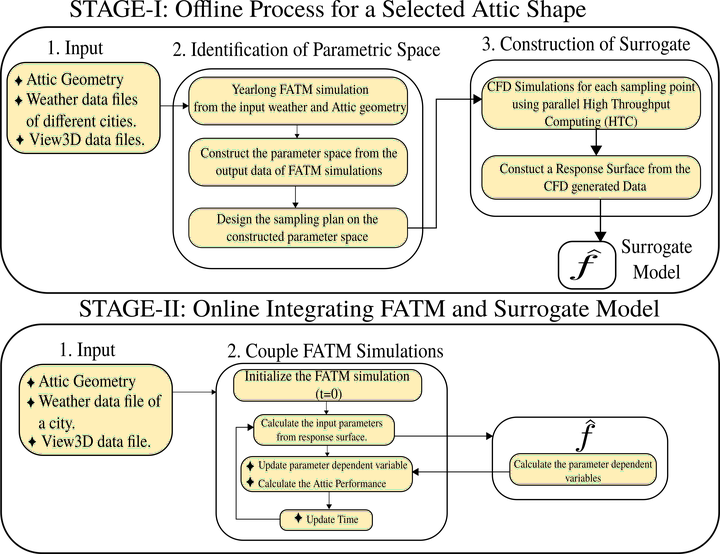Surrogate Modeling for Integrating High-Fidelity Data with Energy Simulations Tools

ABSTRACT
Attic specific energy modeling tools are used by engineers and researchers to evaluate the impact of different design features, products, and materials systems on an attic’s energy, thermal, and hygrothermal performance. These frameworks and their simulation component models have been carefully validated over the last 40–50 years. A fundamental assumption in these modeling tools is that the air within the attic is well mixed. However, various experimental and numerical studies have shown that the flow inside a triangular attic is not well mixed and an asymmetrical heating of enclosure can develop flow instabilities. Under these flow regimes the calculation of interior convective fluxes using empirical correlations can be error prone. To investigate the impact of this assumption on the performance of a benchmark attic problem, we develop a coupling approach between the Fraunhofer Attic Thermal Model (FATM) and computational fluid dynamics (CFD). Instead of directly coupling a CFD solver to FATM, this paper presents an offline surrogate modeling coupling strategy. The generalized method established in this paper allows for future extension of the approach for different attic geometries, as well as whole building simulations. The work flow uses open-source tools for constructing the surrogate and making it easily integrable with any commercial/non-commercial whole building or attic simulation framework. Since the majority of the computations are moved offline, this approach provides substantial computational speedup during online simulations in comparison to earlier coupling approaches. An additional benefit of the approach is the surrogate can also be used for flow visualization inside the attic.